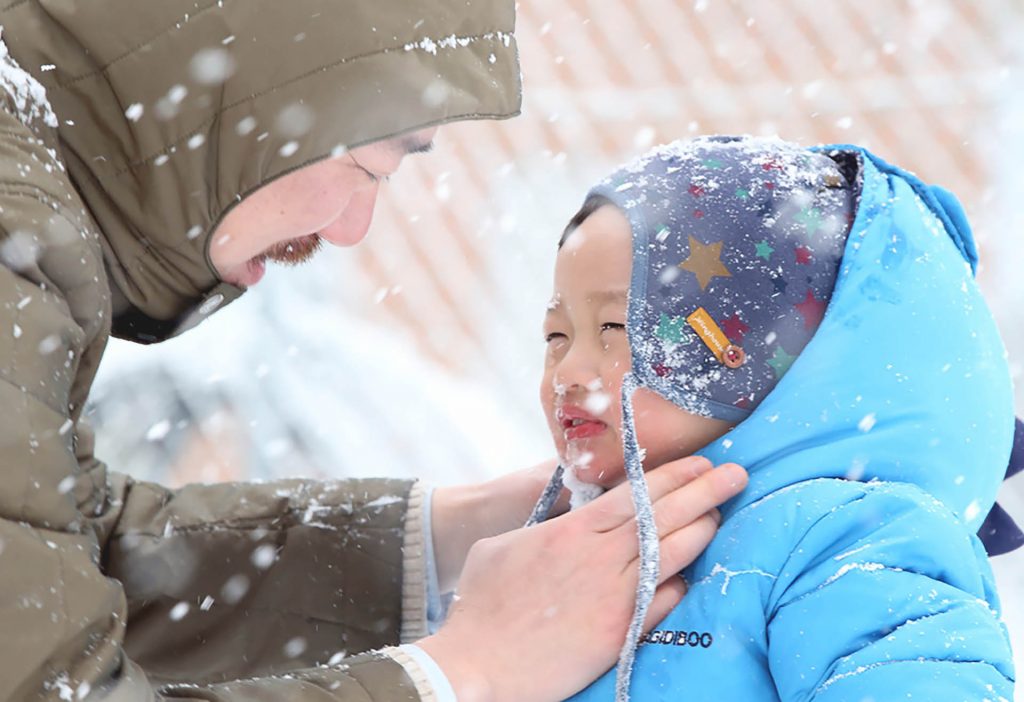How cold is winter in Korea? When winter arrives in Korea, icy cold winds come with it. However, no matter how cold, there are certain sports that can only be enjoyed during the winter season.
For instance, hiking spectacularly snow-capped mountains, camping under the glittery winter stars, and of course, skiing and snowboarding, which are the highlight of winter sports. Skiers from around the world are attracted to Korea’s night skiing. Many ski resorts in the country stay open till dawn. The fun and excitement last through the night.
How cold is winter in Korea?
The winter in Seoul
The winter in Seoul is controlled by the large Siberian high-pressure system (the Asiatic high), which results in predominantly cold, dry north-westerly winds.
The influence of the Siberian high leads to significantly colder winter temperatures than would be expected at this latitude. About every 4 to 6 days a low-pressure trough will move through South Korea, bringing with it cloudiness and light precipitation.
The amount of precipitation locally depends mostly on the elevation of the station and the length of time that the air has been over the Yellow Sea. Maximum snowfall occurs over the northwest coast, which is the most exposed to the northwesterly flow, and in the mountain areas.
Normally less than 10 percent of the annual precipitation falls (falls very much) during the winter. Frequently the weather is cloudless, clear, and dry, except for the southwestern region of the peninsula. The mean January temperature in Seoul is -2.4 °C (27 °F). January is the coldest month in Seoul, often with the lowest temperatures, almost always dropping below -10 °C (14 °F), and sometimes below -15 °C (5 °F).
How cold is winter in Korea?
Korea’s winter lasts from December to February. Cold winds sweep in from Siberia in Russia during this period, resulting in cold, dry weather. The winds are quite strong. The temperature is about -6~3°C on average but can drop below -10°C. Winter brings more snow than rain. Humid winds from across the sea collide with large mountain ranges, bringing heavy snowfall in regions such as the Taebaeksan and Sobaeksan Mountains.
What should I wear when visiting Korea in winter?
A thick coat is highly recommended. Gloves, hats, and winter shoes are essential if you plan to take part in outdoor activities. Transportation, including buses and subways, and indoor areas such as hotels are well heated, sometimes too well, so add or remove layers as necessary
Are there any precautions to take when night skiing?
Visibility is reduced under the strong artificial light, so you MUST be careful and secure a clear view. Be extra careful not to collide with other skiers or snowboarders. It is recommended to wear bright and colorful ski suits and to ski at a speed 80 to 90% of normal daytime speeds.
Will it be difficult to find transportation to the resort on my own?
Most ski resorts in Korea operate shuttle buses, offering an easy and affordable way to head to the slopes. Shuttle buses to and from the resort are available in Seoul and other major cities throughout the country. For more details, visit the website or call the ski resort you wish to visit.
Source: KTO, Wikipedia
